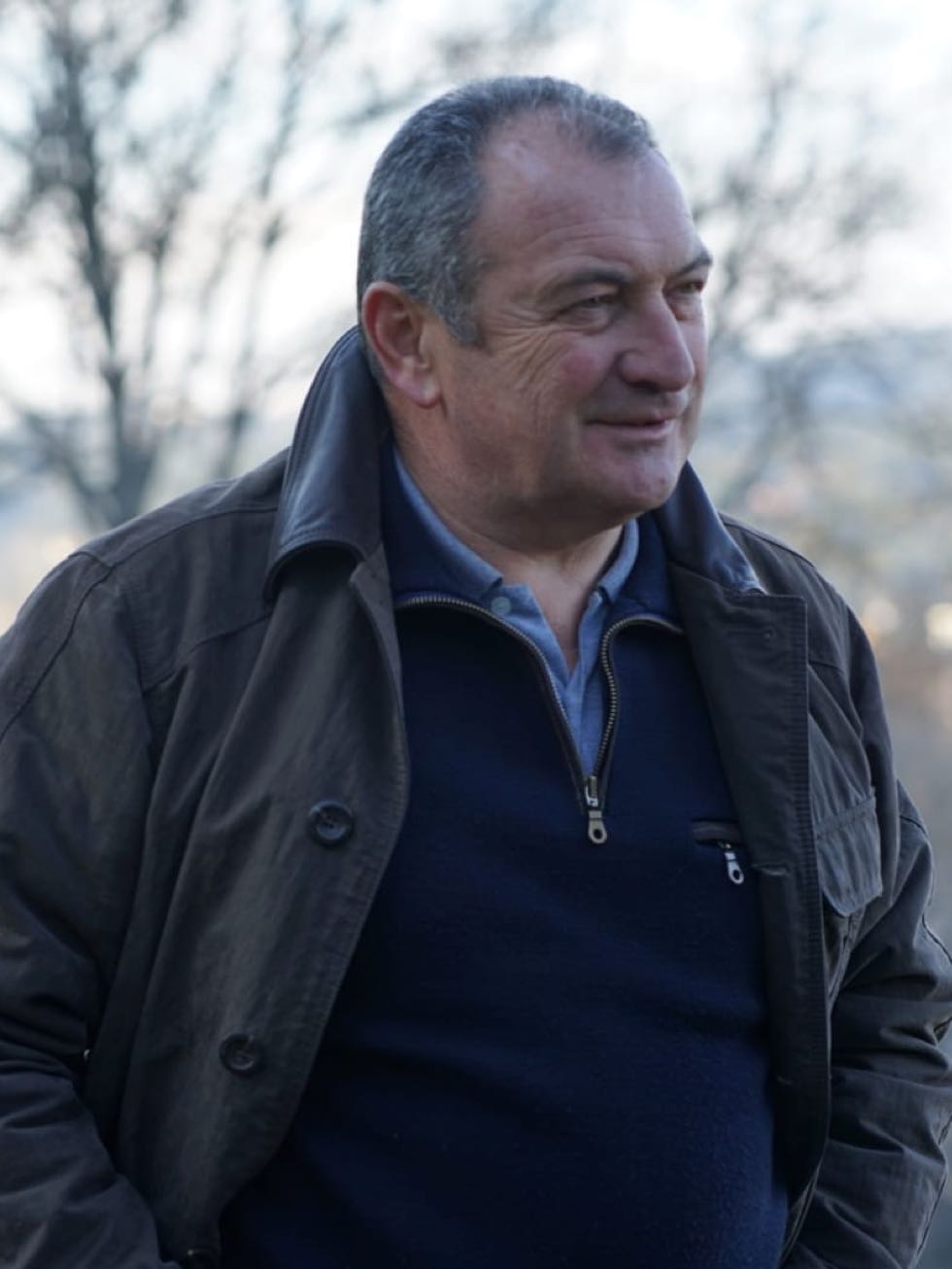This historic estate, situated in the hills just south of Aix-en-Provence, has been in the hands of the Rougier family for two centuries and holds a virtual monopoly on the appellation of Palette. I have admired the wines of Château Simone and have followed the evolution of this domaine over the years. Now, many years after my initial introduction (1981) to the Rougiers, we have been asked to marry our work to theirs. It is our privilege to do so.
Château Simone encompasses twenty hectares of vineyards that sit on limestone soils at elevations between 500 and 750 feet above sea level on the slopes of Montaiguet. The special microclimate of this appellation is influenced by the encircling pine forests, the mass of Mont Sainte-Victoire, and the Arc River. The vineyards were reconstituted after the invasion of phylloxera and many vines are over a century old. The Rougiers maintain the particular vinification methods developed and cherished over many decades. For those of you who are not familiar with these wines, whether rouge, blanc or rosé, we believe you will find them to be compelling and unique.



Château Simone encompasses twenty hectares of vineyards that sit on limestone soils at elevations between 500 and 750 feet above sea level on the slopes of Montaiguet.
All of the grapes are hand harvested, destemmed, lightly pressed and fermented for 15 to 20 days in small wooden vats with only wild yeast, then put into small foudre to rest on the lees. The white is predominantly Clairette, with small amounts of Grenache Blanc and Ugni Blanc, and a dash of Bourboulenc, Muscat Blanc, Picpoul, Furmint and Sémillon. Fermentation takes place at a relatively warm 68 degrees and aged for one year in 20–30 hl casks then one year in older barrels. The red from Simone is an elegant yet well-constituted wine of great depth. It is primarily composed of Grenache and Mourvèdre but its special character reflects the presence of a mélange other grape varieties, albeit in small proportion, including Cinsault, Syrah, Carignan, Cabernet Sauvignon, Castet, Manosquin, Théoulier, Tibouren, Picpoul Noir and Muscat de Hambourg. (The rosé is the exact same blend) Bottled after 18–24 months of aging in foudres and one year or more in aged barrique, it is assembled without filtration. The wine is a classic that deserves to be aged in order to best appreciate its many nuances: plum, pine resin, cinnamon, truffle and spice among other sensations. We invite you to share our pleasure.
Farming
Ecocert Organic Certification Pending. Viticulture has always been practicing organic.
Treatments
No herbicides, chemical fertilizers, or synthetic treatments
Ploughing
Extensive ploughing and working of the soil by tractor.
Soils
Limestone Scree
Vines
Head-trained vines, many over 100-years old, that are replanted on a vine-by-vine basis to maintain a healthy vineyard
Yields
Old vines and extensive debudding lower yields and
eliminate the need for a green harvest.
Harvest
Entirely manual harvest, grapes sorted in the vineyard and sorted again in the cellar
PURCHASING
Always entirely estate fruit
Fermentation
All wines are fermented spontaneously in large wooden foudres with temperature control for 2 weeks.
Extraction
Punchdowns and pumpovers, per the vintage.
Chaptalization
None
Pressing
White wines pressed pneumatically, whole cluster, after a light crushing, red wines pressed pneumatically after destemming and then pressed again in antique basket presses
PRESS WINE
Press wine is aged separately from free-run juice.
Malolactic Fermentation
White and rosé wines do not go through malolactic in the Domaine’s frigid cellars. Red wines are racked into a warmer part of the cellar in the spring before going through malolactic.
Élevage
Palette wines are stored in foudres for 18 months; red and white wines spend an additional year in neutral barrel. Grands Carmes wines spend 8 months in foudres followed by a year in neutral barrel.
LEeS
All wines spend at least 6 months on their fine lees.
FINING & FILTRATION
No fining and no filtration for red wines. Rosé and white wines are unfined but are plate filtered.
SULFUR
Sulfur is applied only at harvest and at bottling. 50 mg/l total sulfur. 15 mg/l free sulfur at release.



